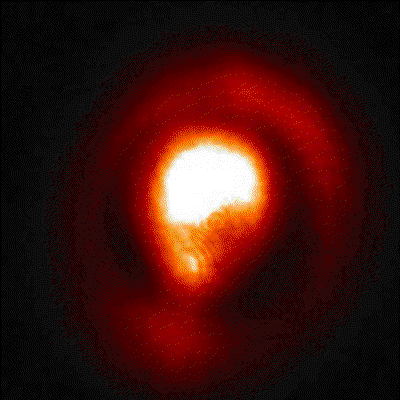Nonlinear Optics in Cold Atoms

Introduction

It is well known that intense laser beams propagating in nonlinear media can self-focus. This phenomenon occurs in media in which the refractive index increases with increasing intensity. Therefore, the centre part of a beam experiences a phase retardation with respect to the wings which causes the beam to focus. This effect can even result in the destruction of the material.
We performed detailed experimental and theoretical investigations on the mechanism and strength of the lensing effect in sodium vapour with circular input polarization (quasi-scalar situation). For high particle densities ‘phase singularities’ can be spontaneously generated due to astigmatic lensing. These so called ‘optical vortices’ have a phase structure similar to hydrodynamical vortices and received a lot of attention during the last years due to their possible role in decorrelating optical patterns.
If the input beam is linearly polarized, Tam and Happer observed in 1977 that it can split into two daughter beam of opposite circular polarization. Since then, much effort was put into an understanding of the instability, one even involving the hypothesis of a ‘fifth force’ (Naik and Pradhan 1981). In a series of careful experiments and subsequent theoretical analysis it was shown that the symmetry breaking is due to small magnetic moments which induce a lateral shift of the two polarization components in opposite directions. This shift is mediated by a small longitudinal component of the dielectric polarization of the medium. A general treatment of the instability in terms of a coupled nonlinear wave equation was given.
Recent activity concerns nonlinear beam shaping effects in ensembles of cold, laser-cooled atoms. The experiments are performed in a magneto-optical trap with rubidium atoms and yielded evidence for self-lensing and nonlinear beam distortion.
The influence of heating and atomic motion on self-lensing and saturation was analysed.
The self-lensing experiments are regarded as the first quest in this area paving the way for more complex self-organization behaviour.
People involved with Nonlinear Optics in Cold Atoms
- PI: Thorsten Ackemann, Wulfhard Lange
Collaborations
- R. Kaiser, G.-L. Lippi (Institut Non Lineaire de Nice)
Funding
- The collaboration was funded by several travel grants of the Alexander von Humboldt foundation.